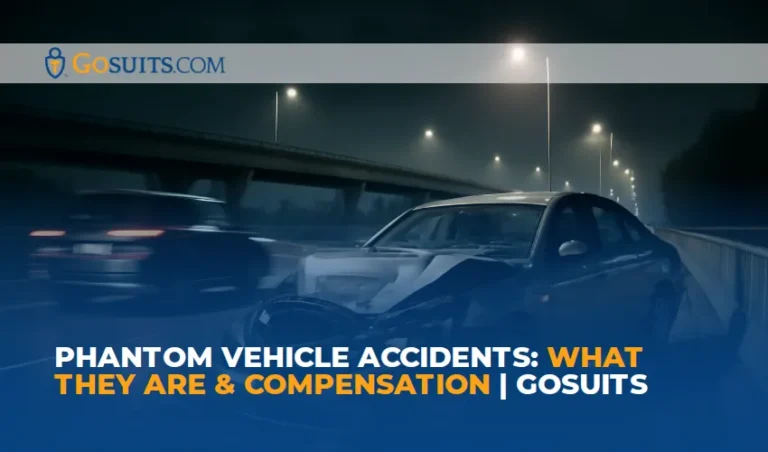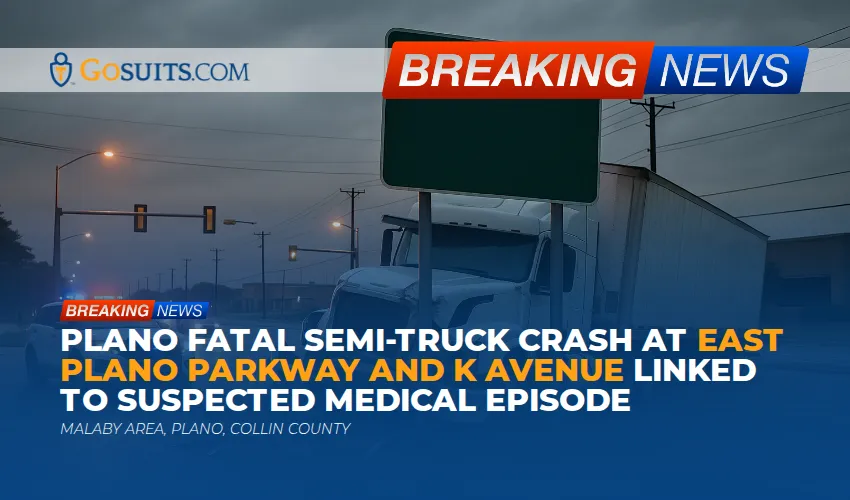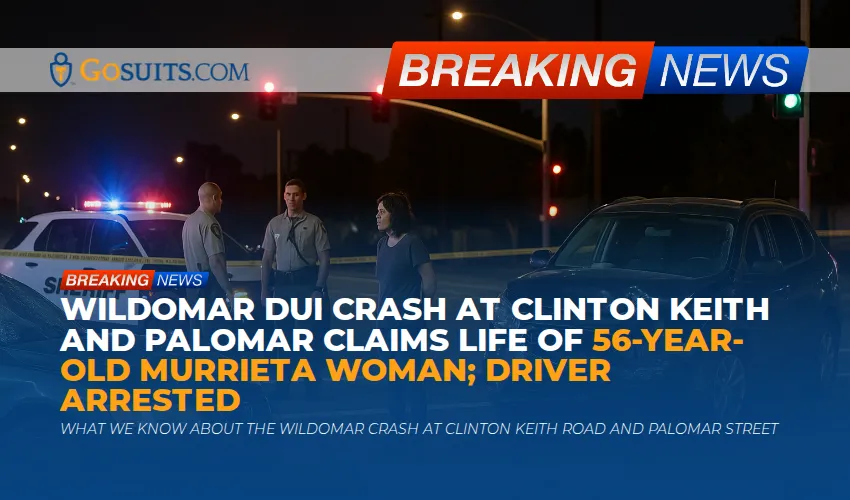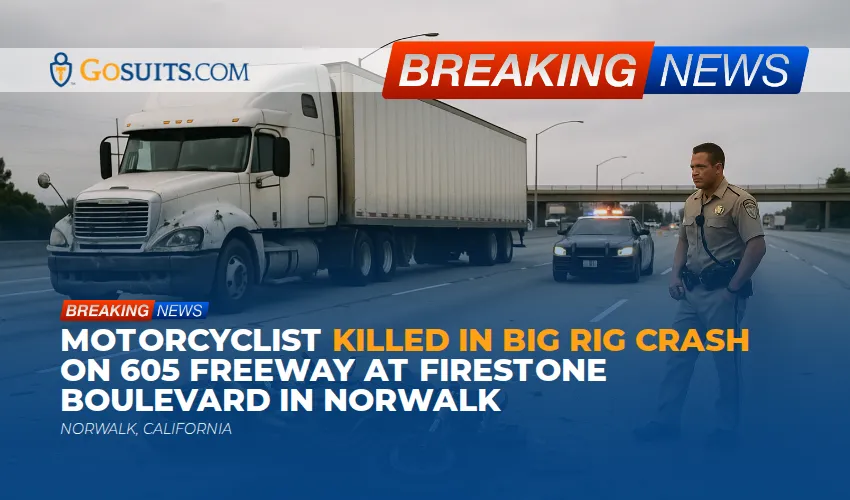- What is a phantom vehicle accident and why does it matter?
- How is a phantom driver accident different from a standard hit-and-run?
- What common scenarios lead to a no-contact car accident?
- What should you do immediately after a ghost car accident to protect your claim?
- What evidence helps prove a phantom vehicle accident?
- How do witness statements and dashcam footage strengthen your case?
- What are police report and state crash-report rules in TX, CA, and IL?
- How does UM/UIM insurance coverage work for phantom vehicle compensation?
- What UM/UIM rules are unique to Texas, California, and Illinois?
- How do you prove a phantom driver accident when there was no contact?
- What damages can you seek for medical bills, lost wages, and pain and suffering?
- What are the statutes of limitations and notice deadlines in TX, CA, and IL?
- How do plaintiffs and defendants approach liability in no-contact claims?
- What practical FAQs come up in phantom vehicle cases near me?
- How can GoSuits help with a phantom vehicle case in TX, CA, and IL?
- Where can you find authoritative resources used here?
What is a phantom vehicle accident and why does it matter?
A phantom vehicle accident, also called a phantom driver accident, ghost car accident, or no-contact car accident, happens when an unidentified vehicle causes you to crash without ever striking your car. You might swerve to avoid a vehicle that drifts into your lane on I‑10 in Houston or the 405 in Los Angeles, lose control, and hit a median or another car. The other driver never stops and may not even realize they caused the crash. These cases matter because compensation often depends on uninsured motorist (UM) or underinsured motorist (UIM) coverage, and the proof rules can be stricter when there is no physical contact.
Phantom vehicle cases are civil injury claims. They involve liability, insurance coverage, and damages across Texas, California, and Illinois. Because you are dealing with a driver who cannot be identified, your claim usually proceeds against your own insurer through UM/UIM coverage. That means you need strong evidence, prompt reporting, and careful compliance with policy deadlines to preserve your right to phantom vehicle compensation.
How is a phantom driver accident different from a standard hit-and-run?
In a typical hit-and-run, the at-fault driver physically hits your car and leaves. In a phantom driver accident, there is no contact. This difference can change how your insurance applies:
- Identification of the at-fault driver: In no-contact cases, the at-fault driver is almost always unidentified, so you cannot make a liability claim against their insurer.
- UM/UIM claim requirements: Some states or policies require actual physical contact or independent corroboration to pay UM claims in a hit-and-run. California law, for example, generally requires physical contact for UM to apply in a hit-and-run scenario, with narrow exceptions for parts of a vehicle or objects it propels into your car (Cal. Ins. Code § 11580.2).
- Evidence burden: You need to prove that a phantom vehicle caused the crash. Without contact, you rely more heavily on witness statements, dashcam footage, 911 audio, roadway debris, and police reports.
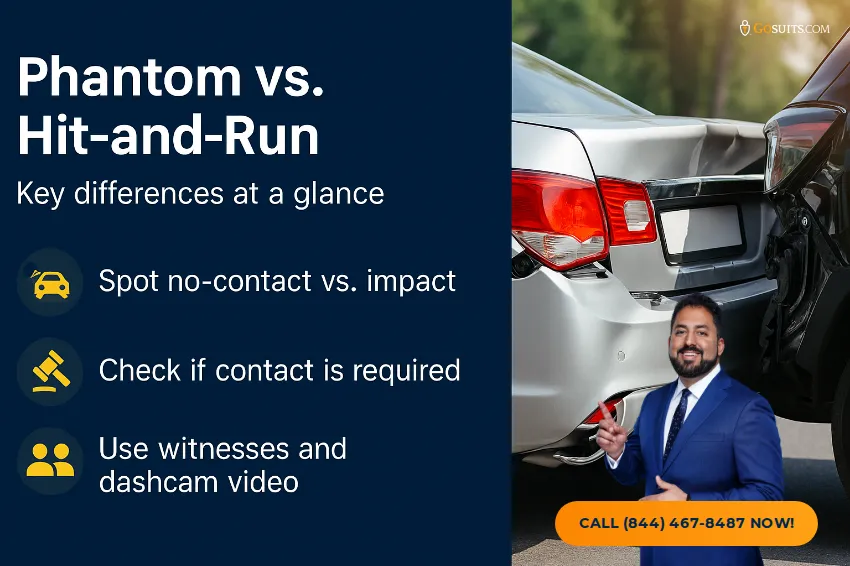
What common scenarios lead to a no-contact car accident?
Common patterns across Houston, Dallas, Austin, San Antonio, Los Angeles, San Diego, San Francisco, Sacramento, Orange County, Chicago, Naperville, and Springfield include:
- Unsafe lane changes: A vehicle drifts into your lane on the freeway, forcing you to swerve into a barrier.
- Sudden braking or cutoffs: A driver cuts across lanes to make an exit, causing a chain reaction that sends you off the road.
- Road rage or aggressive driving: A driver brake-checks you and speeds off; you lose control, avoiding a collision.
- Debris propelled by a vehicle: A truck loses cargo or kicks up debris that strikes your car. In California, if the object was part of the vehicle or propelled by it, this can satisfy the “contact” requirement (Cal. Ins. Code § 11580.2(b)).
- Failure to yield: A car enters your path from a side street, you swerve into a light pole to avoid impact, and the car continues without stopping.
What should you do immediately after a ghost car accident to protect your claim?
Your actions in the first minutes and days after a phantom vehicle accident can make or break a UM/UIM claim:
- Call 911 and seek medical care: Report the crash and request an officer if anyone is injured or a vehicle cannot be safely driven, which triggers reporting duties in many states, including Texas (Tex. Transp. Code § 550.026).
- Tell the officer about the phantom vehicle: Give a detailed description of the vehicle, its direction, lane, and actions. Ask that this information appear in the report.
- Gather evidence: Photograph damage, skid marks, debris, and the scene from multiple angles. Look for paint transfer or vehicle parts.
- Identify and collect witness contacts: Independent witnesses can corroborate your version of events, which is especially important in no-contact cases.
- Preserve dashcam footage: Back up the entire recording, including minutes before and after the crash. Do not overwrite the memory card.
- Notify your insurer quickly: Policy deadlines for notice can be short. Give basic facts, but avoid recorded statements before you have guidance to avoid misunderstandings.

What evidence helps prove a phantom vehicle accident?
Because the other driver is unidentified, your case often hinges on thorough documentation:
- Police crash report: Ensures an official record of the phantom vehicle’s actions. In California, reporting to the DMV is also required within 10 days if there is injury or damage above a threshold (Cal. Veh. Code § 16000).
- Witness statements: Neutral third-party accounts carry weight.
- Dashcam and nearby video: Vehicle cameras, business surveillance, and traffic cams can show the trigger event.
- Physical evidence: Paint transfer, vehicle parts, cargo remnants, and skid marks can support the mechanism of loss.
- Telematics and EDR data: Modern cars store pre-impact braking, steering, and speed data that can corroborate evasive maneuvers.
- 911 calls and CAD logs: Time-stamped calls from you and other motorists can verify what happened and when.
How do witness statements and dashcam footage strengthen your case?
Witnesses and video are often the difference between a denied and a paid phantom vehicle claim:
- Independent corroboration: A neutral witness who saw a vehicle cut you off can satisfy corroboration expectations common in no-contact claims, especially where physical contact is disputed or absent.
- Dashcam clarity: Even if the plate is not visible, dashcam video showing a sudden lane incursion supports causation and helps meet typical UM policy requirements. In California, if a part of the vehicle or an object it propelled struck your car, video can prove the “contact” requirement under Cal. Ins. Code § 11580.2(b).
- Preservation protocols: Save original files, export copies, and document chain of custody to maintain admissibility in litigation or arbitration.
What are police reports and state crash-report rules in TX, CA, and IL?
- Texas: Drivers must immediately report crashes by the quickest means of communication if someone is injured or killed, or if a vehicle cannot be safely driven from the scene (Tex. Transp. Code § 550.026). Officers file crash reports when they investigate. Texas previously required a driver crash report for some crashes; that driver reporting requirement has been repealed, but immediate notification duties remain under § 550.026.
- California: Drivers must report to the DMV within 10 days using an SR‑1 form when there is injury or death or property damage exceeding the statutory threshold (Cal. Veh. Code § 16000). Police crash reports are separate from the DMV SR‑1 filing.
- Illinois: Drivers must file a written report with the Illinois Department of Transportation within 10 days after a motor vehicle crash resulting in injury, death, or property damage meeting statutory criteria, in addition to reporting to police when required (625 ILCS 5/11-408).
Reporting promptly after a phantom vehicle accident helps establish credibility and compliance, which can be pivotal for UM/UIM claims.
How does UM/UIM insurance coverage work for phantom vehicle compensation?
UM/UIM coverage is a first-party benefit you buy to protect yourself when the at-fault driver has no insurance, not enough insurance, or cannot be identified. Key points:
- UM (uninsured motorist): Applies when the at-fault driver has no liability coverage or is an unknown hit-and-run driver as defined by your policy and state law.
- UIM (underinsured motorist): Applies when the at-fault driver’s liability limits are insufficient for your losses, subject to offsets and your policy’s terms.
- First-party claim: You claim against your own insurer. If there is a dispute, it may go to arbitration (common in CA and IL) or litigation (more common in TX due to case law, discussed below).
What UM/UIM rules are unique to Texas, California, and Illinois?
- Texas: Insurers must offer UM/UIM coverage; you can reject it only in writing (Tex. Ins. Code § 1952.101). Texas courts have explained that an insurer’s obligation to pay UIM benefits is not triggered until the insured establishes the liability and damages of the underinsured motorist, often through settlement or a judgment (Brainard v. Trinity Universal Ins. Co., 216 S.W.3d 809 (Tex. 2006)).
- California: Insurers must offer UM/UIM coverage, which can be waived in writing (Cal. Ins. Code § 11580.2(a)(1)). For a hit-and-run UM claim, California generally requires physical contact with the unknown vehicle or with a vehicle part or an object it propelled, and disputes are typically resolved via arbitration (§ 11580.2(b), (f)).
- Illinois: UM coverage is addressed by statute and is standard in policies, with arbitration provisions for disputes when the parties cannot agree on liability or damages (215 ILCS 5/143a).
Because policy language and state rules differ, the same no-contact facts may be covered in Texas and Illinois but contested in California unless there is qualifying contact under California’s statute.
How do you prove a phantom driver accident when there was no contact?
Proof focuses on causation and credibility:
- Prompt reporting: Call 911 immediately and describe the phantom vehicle’s conduct. Delays can raise questions.
- Independent corroboration: Secure witnesses and any available video. Independent accounts support your version of events.
- Scene forensics: Photograph skid marks, yaw marks, gouges, and debris fields. These can show an evasive maneuver consistent with your description.
- Vehicle inspection: Look for paint transfer or impact points consistent with debris or parts from another vehicle (crucial in California to meet contact requirements under § 11580.2).
- EDR/telematics: Download event data recorder information where available to show sudden braking or steering.
Is physical contact required, or can independent corroboration suffice?
- California: Physical contact is generally required for hit-and-run UM claims, satisfied by contact with the vehicle itself or a part of it, or sometimes with an object it propels (Cal. Ins. Code § 11580.2(b)).
- Texas and Illinois: UM/UIM coverage is governed by statute and policy terms. Policies often address unknown motorists and may require corroboration or other proof. Courts and policy language control whether corroborating evidence can substitute for contact in a no-contact crash. Review both the statute and your policy endorsements carefully (Tex. Ins. Code § 1952.101; 215 ILCS 5/143a).

How fast do you need to notify the police and your insurer?
- Police: States require immediate reporting to law enforcement under certain conditions, such as injuries or vehicles disabled from the scene (e.g., Tex. Transp. Code § 550.026), and specific DMV crash reports in California within 10 days (Cal. Veh. Code § 16000), and written reports in Illinois within 10 days (625 ILCS 5/11-408).
- Insurer: Policies typically require prompt notice. Delays can prejudice your claim and may affect coverage, especially in disputed phantom vehicle accidents.
What damages can you seek for medical bills, lost wages, and pain and suffering?
In a UM/UIM claim, you can seek the same categories of damages you could recover from the at-fault driver in a civil case, subject to your policy limits:
- Medical expenses: Emergency care, hospital bills, surgery, physical therapy, medication, and future medical needs.
- Lost wages and loss of earning capacity: Time missed from work and diminished future earning potential.
- Pain and suffering: Physical pain, emotional distress, and loss of enjoyment of life.
- Property damage: Vehicle repairs or total loss value, diminished value, rental or loss-of-use.
In practice, documenting damages thoroughly matters:
- Medical documentation: Keep all records, diagnostic imaging, and physician notes linking injuries to the crash.
- Wage proof: Pay stubs, employer letters, tax returns, and expert vocational assessments where needed.
- Pain and suffering evidence: Journals, family statements, and therapy records can support non-economic losses.
What are the statutes of limitations and notice deadlines in TX, CA, and IL?
Do not miss deadlines. Time limits vary by state and by claim type, and policy notice deadlines can be shorter than lawsuit deadlines.
- Texas: The general statute of limitations for personal injury is two years from the date of the accident (Tex. Civ. Prac. & Rem. Code § 16.003(a)). UIM claims arise from contract, and Texas case law addresses when the contractual claim accrues and how benefits are triggered (Brainard, 216 S.W.3d 809).
- California: The statute of limitations for injury from a vehicle collision is generally two years (Cal. Code Civ. Proc. § 335.1). UM/UIM disputes are often resolved through arbitration under Cal. Ins. Code § 11580.2, and policies may set shorter arbitration or proof-of-loss deadlines.
- Illinois: The general statute of limitations for personal injury is two years (735 ILCS 5/13-202). Illinois UM/UIM claims and arbitration are governed by statute and policy terms (215 ILCS 5/143a).
Always review your policy for prompt notice, proof-of-loss, medical exam, and arbitration or suit deadlines that may shorten your time to act, especially in no-contact cases where coverage is scrutinized.
How do plaintiffs and defendants approach liability in no-contact claims?
- From the plaintiff’s side: You focus on proving that an unidentified vehicle caused the crash and your injuries. You marshal witnesses, dashcam, police reports, 911 logs, roadway evidence, and medical records. In California, you emphasize any physical contact or object propelled by the unknown vehicle to satisfy § 11580.2.
- From the defense/insurer side: The insurer may challenge causation (arguing driver error or an intervening cause), contest the existence of a phantom vehicle, or argue noncompliance with policy conditions such as prompt notice, cooperation, or physical-contact requirements where applicable. Damages, preexisting conditions, or comparative fault may also be disputed.
In Texas, insurers often look to when liability and damages are legally established before paying UIM benefits under Brainard. In California and Illinois, many disputes proceed in UM/UIM arbitration, which emphasizes evidence organization and claim presentation under the policy and statutes.
How can GoSuits help with a phantom vehicle case in TX, CA, and IL?
We understand how disruptive a phantom vehicle accident can be. If you were forced off the road by an unidentified driver anywhere in Texas, California, or Illinois, a free consultation can bring clarity about evidence, coverage, and timelines. Our team focuses on civil injury cases involving UM/UIM claims, including no-contact car accidents in Houston, Dallas, Austin, San Antonio, Los Angeles, San Diego, San Francisco, Sacramento, Orange County, Chicago, Naperville, and Springfield.
- Availability and communication: We are available 24/7 with immediate free consultations at any time. You can reach an attorney and staff at all of our locations day or night. We provide multilingual customer service in many languages, with Spanish and Farsi available 24/7, so you can communicate in the language you are most comfortable using.
- Fee policies and transparency: We offer No win, No Attorney Fees, and we charge no hidden administrative fees. Learn more here: No win, No Attorney Fees.
- Tools and case workflow: We developed proprietary personal injury software used internally by our team only. It helps us move faster in investigating, preserving dashcam and surveillance footage, collecting 911 and CAD records, organizing medical documentation, preparing detailed demands, negotiating, and, when necessary, preparing and filing a lawsuit and handling discovery. We are a law firm that looks ahead of the curve to meet insurers on their own data and process terrain.
- Experience and track record: We have 30 years of combined experience and have litigated more than 1,000 cases, with settlement and verdict results published on our website. See representative matters here: prior cases. For complex collisions including product liability, 18‑wheeler crashes, brain and spinal injuries, and other severe cases, we retain independent professional witnesses in the state to help establish liability and causation where appropriate. We litigate severe injury and complex cases across Texas, California, and Illinois.
- Awards and recognition: Our results include recognition such as #1 settlements and verdicts across multiple U.S. counties according to TopVerdict, a Top 100 Settlement in Texas, Sean Chalaki named Top 40 Under 40 by National Trial Lawyers, recognition by Best Lawyers in 2023, 2024, and 2025, and Super Lawyers selections since 2021.
- Community involvement: We are active in local schools, chambers of commerce, and non-profits, and we serve on boards of trial lawyer organizations such as the Texas Trial Lawyers Association and participate in consumer protection groups.
- Value for phantom vehicle cases: No-contact claims turn on evidence and timing. We help by promptly securing witness statements and dashcam footage, requesting nearby video before it is overwritten, obtaining 911 and dispatch records, working with collision reconstruction where appropriate, and navigating state-specific rules like California’s physical-contact requirement, Texas UIM procedures shaped by case law, and Illinois arbitration processes. We coordinate your medical care documentation to support claims for medical bills, lost wages, and pain and suffering.
- Local presence and immediate help: We serve clients statewide and multi-state with offices in Texas, California, and Illinois. Our nearest teams are available in Houston, Dallas, Austin, San Antonio, Los Angeles, San Diego, San Francisco, Sacramento, Orange County, Chicago, Naperville, and Springfield. We can begin preserving evidence the same day and open your UM/UIM claim promptly to meet policy deadlines.
We are not a volume firm. Our approach is hands-on and tailored to the facts of your case, from early investigation through negotiation, arbitration, or litigation. A free consultation can help you understand next steps and how to protect your rights under your policy and state law.
Resources
- Tex. Transp. Code § 550.026 (Immediate report of accident)
- Tex. Civ. Prac. & Rem. Code § 16.003 (Two-year limitation)
- Tex. Ins. Code § 1952.101 (Offer of UM/UIM coverage)
- Brainard v. Trinity Universal Ins. Co., 216 S.W.3d 809 (Tex. 2006)
- Cal. Ins. Code § 11580.2 (Uninsured motorist coverage; arbitration; hit-and-run contact)
- Cal. Veh. Code § 16000 (DMV report within 10 days)
- Cal. Code Civ. Proc. § 335.1 (Two-year limitation)
- 625 ILCS 5/11-408 (Driver written crash report)
- 735 ILCS 5/13-202 (Two-year limitation)
- 215 ILCS 5/143a (UM/UIM coverage; arbitration)
FAQs
Can I recover if there was no contact at all?
It depends on the state and your policy. California generally requires physical contact in hit-and-run UM claims, but contact with a part of the vehicle or an object it propelled may satisfy the requirement (Cal. Ins. Code § 11580.2(b)). Texas and Illinois rely on statute and policy language; corroboration by witnesses or other evidence is often critical. If you have collision coverage, it may pay for property damage regardless of UM/UIM determinations, subject to deductibles.
What if a truck’s cargo fell and caused my crash?
Document the scene and any identifying info on the truck. In California, if your vehicle was struck by cargo that fell from a vehicle or was propelled by it, that may meet the hit-and-run contact rule for UM (§ 11580.2(b)). In Texas and Illinois, that evidence can support causation and coverage under UM/UIM as defined in the policy.

Do I still need a police report if I feel fine?
Yes. In Texas, you must immediately report certain crashes to law enforcement (Tex. Transp. Code § 550.026). California requires a DMV report within 10 days when there is injury or property damage above the statutory threshold (Cal. Veh. Code § 16000). Illinois requires a written report within 10 days for qualifying crashes (625 ILCS 5/11-408).
How much UM/UIM coverage should I have?
States require insurers to offer UM/UIM and allow you to reject or select limits within the statutory framework (Tex. Ins. Code § 1952.101; Cal. Ins. Code § 11580.2; 215 ILCS 5/143a). Higher limits generally provide better protection in serious injuries. Review your declarations page and ask about stacked coverage, offsets, and how underinsured claims are calculated under your policy.
Will making a UM claim increase my premiums?
Rating decisions vary by insurer and state regulation. Your priority should be health and preserving your rights with timely reporting and thorough documentation under your policy obligations.
